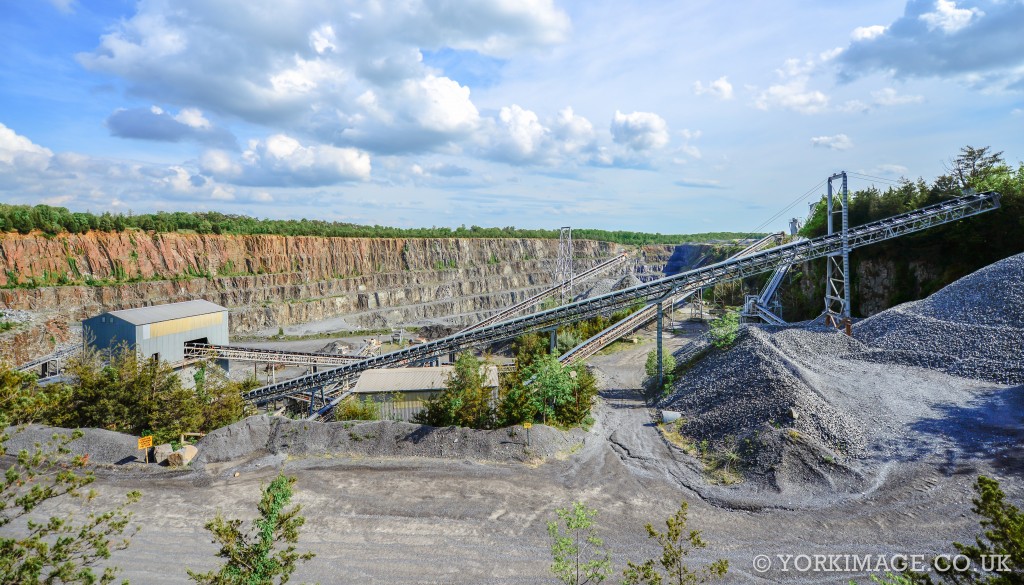ឧស្សាហកម្មនិស្សារណកម្ម រួមមានវិស័យរុករករ៉ែ និងរ៉ែ ការរុករកឧស្ម័នធម្មជាតិ និងប្រេង រោងចក្រចម្រាញ់ប្រេង និងការទាញយកថ្មសម្រាប់ប្រើប្រាស់ក្នុងវិស័យសំណង់ ដូចជាខ្សាច់ ថ្ម និងក្រួស។ ធនធាននិស្សារណកម្មរបស់ប្រទេសកម្ពុជាបានបាត់បង់យ៉ាងគួរឱ្យកត់សម្គាល់ ខណៈដែលធនធានទាំងនេះអាចកំណត់បានតាមភូមិសាស្ត្រ។ អ្នកភូគព្ភវិទូបារាំង និងចិនបានចង្អុលបង្ហាញពីសក្តានុពលរ៉ែនៅក្នុងប្រទេសកម្ពុជាចាប់តាំងពីចុងសតវត្សទី១៩។ ទោះជាយ៉ាងណាក៏ដោយ ទុនបំរុងនៃធនធានរ៉ែបែបនេះមិនត្រូវបានគេវាយតម្លៃសម្រាប់ការអភិវឌ្ឍន៍ ឬទាញយកនោះទេ។1 ច្បាប់នេះមានគោលបំណងគ្រប់គ្រងការគ្រប់គ្រង និងការកេងប្រវ័ញ្ចធនធានរ៉ែ ការគ្រប់គ្រងអណ្តូងរ៉ែ និងសកម្មភាពទាំងអស់ដែលទាក់ទងនឹងប្រតិបត្តិការរុករករ៉ែនៅក្នុងព្រះរាជាណាចក្រកម្ពុជា លើកលែងតែប្រតិបត្តិការរុករកប្រេង និងឧស្ម័ន ដែលត្រូវបានគ្រប់គ្រងដោយច្បាប់ដាច់ដោយឡែកមួយទៀត។ រាល់វត្ថុធាតុដើមដែលបានទាញចេញនៅក្នុងប្រទេសត្រូវបានហាមឃាត់មិនឱ្យនាំចេញ ហើយមានតែផលិតផលសម្រេចប៉ុណ្ណោះដែលត្រូវបានអនុញ្ញាត។2 ធនធានរ៉ែរបស់ប្រទេសកម្ពុជាត្រូវបានបែងចែកទៅជាប្រាំក្រុម រួមមាន រ៉ែលោហៈ រ៉ែអលោហៈធាតុ/រ៉ែឧស្សាហកម្ម ត្បូង និងថ្មសំអាង រ៉ែឥន្ធនៈរឹង និងរ៉ែសំណង់។3

រូបភាពអំពីការវាយយកថ្មជាលក្ខណៈឧស្សាហកម្ម ថតដោយ York Image នៅថ្ងៃទី១១ ខែឧសភា ឆ្នាំ២០១៣។អាជ្ញាប័ណ្ណ៖ CC BY-NC-ND 2.0
រដ្ឋាភិបាលបានចាត់ទុកឧស្សាហកម្មនិស្សារណកម្មជាវិស័យដ៏មានសក្តានុពល ដើម្បីជំរុញដល់ការអភិវឌ្ឍសេដ្ឋកិច្ច។4 នៅក្រោមរដ្ឋធម្មនុញ្ញ ធនធានធម្មជាតិទាំងអស់គឺជាកម្មសិទ្ធិរបស់រដ្ឋ5 ដូច្នេះហើយការជីកយករ៉ែដែលធ្វើឡើងដោយគ្មានអាជ្ញាប័ណ្ណគឺខុសច្បាប់។ លើកលែងតែប្រេង ឧស្សាហកម្មនិស្សារណកម្មភាគច្រើន ត្រូវបានគ្រប់គ្រងដោយក្រសួងរ៉ែ និងថាមពល (MME) ដែលពីមុនជាក្រសួងឧស្សាហកម្ម រ៉ែ និងថាមពល ឬ MIME។ MME ទទួលខុសត្រូវលើការផ្តល់អាជ្ញាបណ្ណ ការគ្រប់គ្រង និងត្រួតពិនិត្យប្រតិបត្តិការរុករករ៉ែ និងធានាថាបទប្បញ្ញត្តិនៃច្បាប់រុករករ៉ែត្រូវបានគោរព។6 ខណៈដែល MME ទទួលបន្ទុកលើការចេញ និងព្យួរអាជ្ញាប័ណ្ណ ក្រសួងផ្សេងទៀត រួមទាំងក្រសួងបរិស្ថាន7 និងក្រសួងធនធានទឹក និងឧតុនិយម8 មានទំនួលខុសត្រូវនៅពេលដែលមានការបំពុលបរិស្ថាន និងតំបន់ការពារត្រួវបានយកចិត្តទុកដាក់។ ឧទាហរណ៍ ការវាយតម្លៃហេតុប៉ះពាល់បរិស្ថាន (EIA) ដែលជាទំនួលខុសត្រូវរបស់ក្រសួងបរិស្ថានគឺត្រូវបានទាមទារសម្រាប់ប្រតិបត្តិការប្រេង និងឧស្ម័នទាំងអស់។9
អាជ្ញាបណ្ណត្រូវបានគ្របដណ្តប់ដោយច្បាប់ស្តីពីការគ្រប់គ្រង និងការធ្វើអាជីវកម្មធនធានរ៉ែ10 និងអនុក្រឹត្យលេខ ៧២ ស្តីពីការគ្រប់គ្រងអាជ្ញាបណ្ណស្វែងរុករកនិងអាជ្ញាបណ្ណឧស្សាហកម្មអាជីវកម្មធនធានរ៉ែរាជរដ្ឋាភិបាល។ អនុក្រឹត្យនេះកំណត់អំពីដំណើរការ និងលក្ខខណ្ឌជុំវិញការចេញអាជ្ញាប័ណ្ណ។ អាជ្ញាប័ណ្ណរុករកមានសុពលភាពរយៈពេលបីឆ្នាំ ហើយអាចបន្តជាថ្មីពីរដងទៀត។ អាជ្ញាបណ្ណឧស្សាហកម្មរុករករ៉ែ មានសុពលភាពរហូតដល់ ២១ ឆ្នាំ ហើយអាចបន្តរយៈពេលពីរដងក្នុងរយៈពេល ១០ ឆ្នាំ។ 11
ដើម្បីលើកកម្ពស់ការអនុវត្តការរុករករ៉ែប្រកបដោយនិរន្តរភាព ក្នុងគោលបំណងសម្រេចឱ្យបាននូវចក្ខុវិស័យគោលនយោបាយ “ទ្រព្យសម្បត្តិសម្រាប់ទាំងអស់គ្នា” រដ្ឋាភិបាលបានអនុម័តអនុក្រឹត្យលេខ ៧២ ស្តីពីការគ្រប់គ្រងការរុករករ៉ែ និងអាជ្ញាប័ណ្ណរុករករ៉ែឧស្សាហកម្ម 12 និងប្រកាសលេខ ៣៦០ ស្តីពីការផ្តល់អាជ្ញាប័ណ្ណរុករករ៉ែ ចុះថ្ងៃទី ០៧ ខែ តុលា ឆ្នាំ ២០១៦។
ចាប់តាំងពីការប្រកាសឱ្យប្រើច្បាប់ស្តីពីការធ្វើអាជីវកម្មធនធានរ៉ែក្នុងឆ្នាំ ២០០១ រដ្ឋាភិបាលបានផ្តល់ការអនុញ្ញាតឱ្យរុករក និងធ្វើអាជីវកម្មដល់ក្រុមហ៊ុនក្នុងស្រុក និងអន្តរជាតិមួយចំនួន។ គិតត្រឹមខែធ្នូ ឆ្នាំ ២០១៦ មានអាជ្ញាបណ្ណឧស្សាហកម្មរុករករ៉ែសកម្មចំនួន ២៣ អាជ្ញាប័ណ្ណរុករករ៉ែចំនួន ៦១ និងអាជ្ញាប័ណ្ណរុករករ៉ែសំណង់ចំនួន ៤០១។13 ថ្មីៗនេះ ក្រសួងរ៉ែ និងថាមពល (MME) បានផ្តល់អាជ្ញាបណ្ណឱ្យជីកយករ៉ែមាសដល់ក្រុមហ៊ុនចំនួន៧ ក្នុងខេត្តចំនួន ៥ គិតត្រឹមឆ្នាំ ២០២១ រួមមានខេត្តក្រចេះ ព្រះវិហារ មណ្ឌលគិរី រតនគិរី និងបាត់ដំបង។ ក្រុមហ៊ុន Renaissance Minerals (Cambodia) Ltd ដែលជាក្រុមហ៊ុនមួយក្នុងចំណោមក្រុមហ៊ុននានា បានចាប់ផ្តើមការចម្រាញ់មាស ខណៈដែលក្រុមហ៊ុនផ្សេងទៀតកំពុងរៀបចំបង្កើតខ្សែសង្វាក់ផលិតកម្មចម្រាញ់មាស។14
ស្ថានភាពរុករករ៉ែ
បរិមាណនៃលំហូរវិនិយោគបរទេសចូលមកសម្រាប់ឧស្សាហកម្មនិស្សារណកម្មក្នុងឆ្នាំ ២០១៨-២០១៩ មានចំនួន ១,១ ទៅ ១,៣ ពាន់លានដុល្លារ ពោលគឺប្រហែល ៧៦% នៃការព្យាករណ៍របស់វិនិយោគផ្ទាល់ពីបរទេសរបស់ធនាគារពិភពលោក (FDI) ក្នុងឆ្នាំ ២០១៦។15 នៅឆ្នាំ ២០១៩ កម្ពុជាប្រមូលបាន ២១ លានដុល្លារ ជាចំណូលមិនមែនសារពើពន្ធ។ ប្រាក់ចំណូលពីវិស័យរ៉ែកើនឡើងដល់ ៥% ចាប់ពីឆ្នាំ២០១៨។16 កម្ពុជាប្រមូលបានចំណូលមិនមែនសារពើពន្ធជាង ២១លានដុល្លារ ពីវិស័យរ៉ែក្នុងឆ្នាំ២០២០។17
ខាងក្រោមនេះគឺជាការព្យាករលំហូរចូលការវិនិយោគផ្ទាល់ពីបរទេស ចូលក្នុងវិស័យនិស្សារណកម្មរបស់កម្ពុជាសម្រាប់ឆ្នាំ ២០១៨-២០១៩។18
- ប្លុកប្រេង A (ដំណាក់កាលទី ១a)៖ ១៧១ លានដុល្លារ
- មាសអូរក្វាវ៖ ១៣០ លានដុល្លារ
- រោងចក្រស៊ីម៉ងត៍៖ ៥០០ លានដុល្លារ
- រ៉ែឧស្សាហកម្មផ្សេងទៀត៖ ១០០លានដុល្លារ និងការរុករករ៉ែ ប្រេង និងឧស្ម័នមាន ១០លានដុល្លារ។
ប្រេងឥន្ធនៈ
សកម្មភាពប្រេងឥន្ធនៈភាគច្រើនស្ថិតនៅក្រោមយុត្តាធិការរបស់អាជ្ញាធរប្រេងជាតិកម្ពុជា (CNPA) ជាជាងអគ្គនាយកដ្ឋានប្រេងនៃ MME ។ CNPA ទទួលខុសត្រូវលើការវាយតម្លៃការដេញថ្លៃរុករក និងផ្តល់អនុសាសន៍ដល់រដ្ឋាភិបាលលើការផ្តល់កិច្ចព្រមព្រៀងប្រេងសម្រាប់ក្រុមហ៊ុនជាក់លាក់ណាមួយ។19 ប្រទេសកម្ពុជាបានបង្កើតប្លុកឈូងសមុទ្រចំនួន ៦ (A-F) ប្លុកនៅលើច្រាំងចំនួន ១៩ (I-XIX) និងប្លុកចំនួន ៤ នៅក្នុងតំបន់ទាមទារត្រួតស៊ីគ្នា (OCA) ជាមួយប្រទេសថៃសម្រាប់ការរុករកប្រេង និងឧស្ម័ន។ Offshore Block A ប្រាកដណាស់នឹងក្លាយជាប្លុកដំបូងគេដែលផលិតប្រេង។20 គណៈកម្មាធិការមួយត្រូវបានបង្កើតឡើង ដើម្បីត្រួតពិនិត្យការចរចាជាថ្មីជាមួយរដ្ឋាភិបាលថៃលើ OCA ដែលស្ថិតក្រោមជម្លោះតាំងពីដើមទសវត្សរ៍ឆ្នាំ១៩៧០។21
ការជីកយករ៉ែមាស
លោកនាយករដ្ឋមន្ត្រី ហ៊ុន សែន បានថ្លែងថា នៅថ្ងៃទី១០ ខែមិថុនា ឆ្នាំ២០២១ ថាក្រុមហ៊ុន Renaissance Minerals របស់អូស្ត្រាលី នឹងចាប់ផ្តើមផលិតមាសនៅក្នុងខេត្តមណ្ឌលគិរី នៅថ្ងៃទី២១ ខែមិថុនា ឆ្នាំ២០២១ ដោយអាចបង្កើតបានមាសសុទ្ធជាមធ្យម ៣តោនក្នុងមួយឆ្នាំ ក្នុងប្រតិបត្តិការរយៈពេល ៨ឆ្នាំដំបូងរបស់ខ្លួន។22 ក្រុមហ៊ុន Renaissance Minerals ប្តេជ្ញាចិត្តក្នុងការរុករក អភិវឌ្ឍ និងប្រតិបត្តិការគម្រោងមាសកម្ពុជា ដែលក្រុមហ៊ុនកាន់កាប់ទាំងស្រុង។ បន្ទាប់ពីផ្តល់អាជ្ញាបណ្ណ និងកិច្ចព្រមព្រៀងរុករកថ្មី ក្រុមហ៊ុនទទួលបានអាជ្ញាបណ្ណរុករកបន្ថែមចំនួន ៥ ដូចជា គម្រោងកៀនញែក គម្រោងភ្នំឃ្នៀង គម្រោងស្នួល គម្រោងព្រែកខ្លង និងអូរខឹត និងគម្រោងមាសអូរក្វាវ ដែលមានផ្ទៃដីប្រមាណ ១.៥០០ គីឡូម៉ែត្រក្រឡា ក្នុងខែកក្កដា ឆ្នាំ២០១៧។23 គម្រោងមាសអូរក្វាវ គ្របដណ្តប់ប្រហែល ៧៥% (១.១២៤ គីឡូម៉ែត្រក្រឡា) នៃផ្ទៃដីទាំងមូល។
ផលប៉ះពាល់ដែលអាចកើតមាននៃការជីកយករ៉ែ
ការជីកយករ៉ែមានសក្តានុពលទាំងវិជ្ជមាន និងអវិជ្ជមានលើសង្គម សេដ្ឋកិច្ច និងបរិស្ថាន។ ផលប៉ះពាល់ជាវិជ្ជមានដែលអាចកើតមាននៃការជីកយករ៉ែគឺ ការអភិវឌ្ឍន៍ និងអត្ថប្រយោជន៍ផ្នែកហិរញ្ញវត្ថុ (ការបង្កើតទ្រព្យសម្បត្តិ និងការកើនឡើងនៃការវិនិយោគ) និងអត្ថប្រយោជន៍សម្រាប់ប្រជាជនក្នុងតំបន់ (ការងារ ជំនាញ ហេដ្ឋារចនាសម្ព័ន្ធដែលប្រសើរឡើង ក៏ដូចជាការអប់រំ និងកម្មវិធីសង្គម)។24 កម្ពុជានឹងមើលឃើញអំពីអត្ថប្រយោជន៍របស់ឧស្សាហកម្មរ៉ែបន្ទាប់ពីឆ្នាំ២០២៣ ព្រោះវានឹងបង្កើតមូលដ្ឋានគ្រឹះសេដ្ឋកិច្ចកាន់តែរឹងមាំ ឱកាសការងារកាន់តែច្រើន និងអាជីវកម្មកាន់តែច្រើន។ ប្រាក់ចំណូលដែលបង្កើតដោយឧស្សាហកម្មនិស្សារណកម្ម គួរតែត្រូវបានបញ្ជូនទៅមូលនិធិជាតិ ដែលអាចប្រើប្រាស់សម្រាប់គ្របដណ្តប់លើវិស័យអាទិភាពដូចជាការអប់រំ សុខភាពសាធារណៈ និងការគាំពារសង្គម។25 ប្រទេសកម្ពុជាបានចូលរួមជាក្រុមអ្នកផលិតមាសរបស់ពិភពលោកជាមួយនឹងការចាប់ផ្តើមផលិតកម្មនៅតំបន់អូរក្វាវ ស្រុកកែវសីមា ខេត្តមណ្ឌលគិរី ដែលក្រុមហ៊ុន Renaissance Minerals បានរុករក និងស្រាវជ្រាវអស់រយៈពេល ១៤ឆ្នាំមកហើយ។ គម្រោងនេះត្រូវបានគេរំពឹងថានឹងផ្តល់ប្រាក់ចំណូលជាតិប្រចាំឆ្នាំចំនួន ១៨៥លានដុល្លារ សម្រាប់ប្រទេសកម្ពុជា រួមទាំងយ៉ាងហោចណាស់ ៤០លានដុល្លារ ជាសួយសារអាករ និងចំណូលពន្ធ ដែលនឹងត្រូវប្រើប្រាស់សម្រាប់ការអភិវឌ្ឍន៍សង្គម។26 លើសពីនេះ ផលិតផលក្នុងស្រុកសរុបដែលបានមកពីការជីកយករ៉ែនៅកម្ពុជាបានកើនឡើងពីប្រមាណ ២០៤លានដុល្លារ ក្នុងឆ្នាំ ២០១៨ ដល់ ២៤៨លានដុល្លារ ក្នុងឆ្នាំ២០១៩។27
បើមានការគ្រប់គ្រងបានល្អ វិស័យឧស្សាហកម្មនិស្សារណកម្មនឹងចូលរួមចំណែកយ៉ាងសំខាន់ក្នុងការអភិវឌ្ឍសេដ្ឋកិច្ចកម្ពុជា។ បើមិនដូច្នោះទេ វាអាចនឹងបង្កជាបញ្ហាសុខភាពសាធារណៈ និងភាពមិនពេញចិត្ត។ ផលប៉ះពាល់អវិជ្ជមានដែលអាចកើតមាននៃការរុករករ៉ែរួមមាន ផលប៉ះពាល់អវិជ្ជមានលើបរិស្ថាន (ការបំពុលដោយសារធាតុគីមី សំលេងរំខាន ធូលី ផ្សែង រំញ័រ កាកសំណល់ ការប្រើប្រាស់ទឹក ការកាប់ព្រៃឈើ និងការបំផ្លិចបំផ្លាញទីជម្រក) និងផលប៉ះពាល់អវិជ្ជមានលើមនុស្ស (កម្លាំងពលកម្ម ផលប៉ះពាល់លើស្ត្រី ការទន្ទ្រានយកដី ការផ្លាស់ទីលំនៅ ជនជាតិដើមភាគតិច ការបាត់បង់ប្រាក់ចំណូល អំពើហិង្សានិងការគំរាមកំហែង ការបំបែកសហគមន៍ និងកង្វះតម្លាភាព)។28 រដ្ឋាភិបាលបានដោះស្រាយបញ្ហាផ្សេងៗទាក់ទងនឹងការជីកយករ៉ែជាមួយប្រជាជនក្នុងស្រុក រួមទាំងស្រុកមួយនៅរវៀង ខេត្តព្រះវិហារ ដែលអ្នកស្រុកអះអាងថា អាជីវកម្មរ៉ែបានរំលោភយកដីរបស់ពួកគេ។29 ជនជាតិដើមភាគតិចក្នុងខេត្តមណ្ឌលគិរី ជំរុញឱ្យមន្ត្រីរដ្ឋាភិបាលប្រុងប្រយ័ត្នក្នុងការផ្តល់ដីសម្បទានរ៉ែនៅក្នុងខេត្ត បន្ទាប់ពីឧប្បត្តិហេតុកាលពីខែឧសភា ឆ្នាំ ២០១៨ ដែលអ្នកភូមិរាប់រយនាក់បានឈឺ និងរាប់សិបនាក់បានស្លាប់ នៅពេលដែលសារធាតុពុល រួមទាំងសារធាតុស៊ីយ៉ានុត ត្រូវបានគ្រប់គ្រងមិនត្រឹមត្រូវ ហើយបានបែកធ្លាយចូលទៅក្នុងទឹកទន្លេក្នុងស្រុក។30 ក្រុមហ៊ុនរ៉ែមួយចំនួនដែលបានវិនិយោគនៅតំបន់បានបិទផ្លូវធំៗ បង្កការកកស្ទះចរាចរណ៍។ តំបន់រុករករ៉ែអាចបង្កគ្រោះថ្នាក់ដល់សត្វព្រៃនៅក្នុងជម្រកធម្មជាតិ និងតំបន់ជុំវិញ។ ជាលទ្ធផល សាជីវកម្មរ៉ែ និងរដ្ឋាភិបាលគួរតែបើកទូលាយរបាយការណ៍វាយតម្លៃហេតុប៉ះពាល់បរិស្ថាន (EIA) របស់គម្រោងនានាដល់សាធារណៈជន និងអនុញ្ញាតឱ្យប្រជាពលរដ្ឋក្នុងតំបន់ចូលរួមក្នុងការសម្រេចចិត្ត។ លើសពីនេះ រដ្ឋាភិបាលគួរតែបើកទូលាយទិន្នន័យចំណូលជាសាធារណៈផងដែរ។31
អង្គការសង្គមស៊ីវិលសកម្ម (CSOs) ក្នុងវិស័យរ៉ែ
ភាគីពាក់ព័ន្ធសកម្មនៅក្នុងឧស្សាហកម្មនិស្សារណកម្មនៅកម្ពុជារួមមាន អង្គការអភិរក្សសត្វព្រៃពិភពលោក (WWF) សម្ព័ន្ធភាពកម្ពុជាដើម្បីតម្លាភាពចំណូលធនធាន (CRRT) មជ្ឈមណ្ឌលធនធានប្រជាធិបតេយ្យសម្រាប់ការអភិវឌ្ឍន៍ជាតិ (DRCND) អង្គការសមាគមខ្មែរលើ (HA) អុកស្វាមនៅកម្ពុជា(OXFAM Cambodia) PACT អង្គការអភិវឌ្ឍន៍ និងភាពជាដៃគូរក្នុងសកម្មភាព (DPA) អង្គការពន្លកខ្មែរ អង្គការក្រុមទ្រទ្រង់ភូមិ (VSG) អង្គការអនុផលព្រៃឈើ (NTFP) សម្ព័ន្ធដើម្បីសុចរិតភាព និងគណនេយ្យភាពសង្គម (CISA) អង្គការតម្លាភាពកម្ពុជា វេទិកានៃអង្គការមិនមែនរដ្ឋាភិបាលស្តីពីកម្ពុជា អង្គការសង្គ្រោះសត្វព្រៃកម្ពុជា ( SCW) និងអង្គការសហគមន៍មូលដ្ឋានផ្សេងទៀត។ វត្តមានរបស់ពួកគេបានផ្តល់នូវការត្រួតពិនិត្យ និងសមតុល្យចាំបាច់សម្រាប់ការគ្រប់គ្រងវិស័យរុករករ៉ែកាន់តែប្រសើរឡើង។
ទាក់ទងនឹងឧស្សាហកម្មនិស្សារណកម្ម
ឯកសារយោង
- 1. Chrea Vichett, “ស្ថានភាពបច្ចុប្បន្ននៃឧស្សាហកម្មនិស្សារណកម្មនៅកម្ពុជា,” អគ្គនាយកដ្ឋានធនធានរ៉ែកម្ពុជា, ថ្ងៃទី ០៦ ខែមីនា ឆ្នាំ២០១៣, បានចូលអាននៅថ្ងៃទី ១៧ ខែមករា ឆ្នាំ២០២២។
- 2. រាជរដ្ឋាភិបាលកម្ពុជា, “ច្បាប់ស្តីពីការគ្រប់គ្រង និងការធ្វើអាជីវកម្មធនធានរ៉ែ,” ថ្ងៃទី ១៣ ខែកក្កដា ឆ្នាំ២០០១, បានចូលអាននៅថ្ងៃទី ១៧ ខែមករា ឆ្នាំ២០២២។
- 3. Chrea Vichett, “ស្ថានភាពបច្ចុប្បន្ននៃឧស្សាហកម្មនិស្សារណកម្មនៅកម្ពុជា,” អគ្គនាយកដ្ឋានធនធានរ៉ែកម្ពុជា, ថ្ងៃទី ០៦ ខែមីនា ឆ្នាំ២០១៣, បានចូលអាននៅថ្ងៃទី ១៧ ខែមករា ឆ្នាំ២០២២។
- 4. ក្រសួងផែនការ, "ផែនការយុទ្ធសាស្ត្រអភិវឌ្ឍន៍ជាតិឆ្នាំ២០១៤-២០១៨," ឆ្នាំ២០១៤, បានចូលអាននៅថ្ងៃទី ០៩ ខែកុម្ភៈ ឆ្នាំ២០២២។
- 5. រាជរដ្ឋាភិបាលកម្ពុជា, "រដ្ឋធម្មនុញ្ញនៃព្រះរាជាណាចក្រកម្ពុជា," មាត្រា ៥៨, ថ្ងៃទី ២១ ខែកញ្ញា ឆ្នាំ១៩៩៣, បានចូលអាននៅថ្ងៃទី ០៩ ខែកុម្ភៈ ឆ្នាំ២០២២។
- 6. ក្រសួងរ៉ែ និងថាមពល, "ច្បាប់ស្តីពីការគ្រប់គ្រង និងការធ្វើអាជីរកម្មធនធានរ៉ែ," មាត្រា ១៥, ថ្ងៃទី ១៣ ខែកក្កដា ឆ្នាំ២០០១, បានចូលអាននៅថ្ងៃទី ០៩ ខែកុម្ភៈ ឆ្នាំ២០២២។
- 7. ព្រះមហាក្សត្រនៃព្រះរាជាណាចក្រកម្ពុជា, "ច្បាប់ស្តីពីការបង្កើតក្រសួងបរិស្ថាន," មាត្រា ២, ថ្ងៃទី ២៤ ខែមករា ឆ្នាំ១៩៩៦, បានចូលអាននៅថ្ងៃទី ០៩ ខែកុម្ភៈ ឆ្នាំ២០២២។
- 8. ព្រះមហាក្សត្រនៃព្រះរាជាណាចក្រកម្ពុជា, "ច្បាប់ស្តីពីការបង្កើតក្រសួងធនធានទីក និងឧតុនិយម," មាត្រា ៣, ថ្ងៃទី ២៦ខែមិថុនា ឆ្នាំ១៩៩៩, បានចូលអាននៅថ្ងៃទី ០៩ ខែកុម្ភៈ ឆ្នាំ២០២២។
- 9. រាជរដ្ឋាភិបាលកម្ពុជា, "អនុក្រឹត្យលេខ ៧២ ស្តីពីដំណើរការនៃការវាយតម្លៃហេតុប៉ះពាល់បរិស្ថាន," ថ្ងៃទី ១១ ខែសីហា ឆ្នាំ១៩៩៩, បានចូលអាននៅថ្ងៃទី ០៩ ខែកុម្ភៈ ឆ្នាំ២០២២។
- 10. ក្រសួងរ៉ែ និងថាមពល, "ច្បាប់ស្តីពីការគ្រប់គ្រង និងការធ្វើអាជីរកម្មធនធានរ៉ែ," មាត្រា ១៥, ថ្ងៃទី ១៣ ខែកក្កដា ឆ្នាំ២០០១, បានចូលអាននៅថ្ងៃទី ០៩ ខែកុម្ភៈ ឆ្នាំ២០២២។
- 11. រាជរដ្ឋាភិបាលកម្ពុជា, "អនុក្រឹត្យលេខ ៧២ ស្តីពីការគ្រប់គ្រងអាជ្ញាបណ្ណស្វែងរុករកនិងអាជ្ញាបណ្ណឧស្សាហកម្មអាជីវកម្មធនធានរ៉ែរាជរដ្ឋាភិបាល," ថ្ងៃទី ០៥ ខែឧសភា ឆ្នាំ២០១៦, បានចូលអាននៅថ្ងៃទី ០៩ ខែកុម្ភៈ ឆ្នាំ២០២២។
- 12. ដូចឯកសារយោងខាងលើ។
- 13. គីម មីនា, "ដំណើរការផ្តល់អាជ្ញាបណ្ណរុករករ៉ែនៅកម្ពុជា៖ ការវាយតម្លៃហានិភ័យអភិបាលកិច្ច," ខែមករា ឆ្នាំ២០១៥, បានចូលអាននៅថ្ងៃទី ១៧ ខែមករា ឆ្នាំ២០២២។
- 14. បុគ្គលិកខ្មែរថាមស៍, "កម្ពុជាផ្តល់អាជ្ញាប័ណ្ណរុករករ៉ែមាសដល់ក្រុមហ៊ុនចំនួនប្រាំពីរក្នុងខេត្តចំនួនប្រាំ," ខ្មែរថាមស៍, ថ្ងៃទី ១១ ខែវិច្ឆិកា ឆ្នាំ២០២១, បានចូលអាននៅថ្ងៃទី ១៧ ខែមករា ឆ្នាំ២០២២។
- 15. អ្នកស្រាវជ្រាវ INRES, "ឆ្នាំ២០១៨៖ ទស្សនៈវិស័យរ៉ែ ប្រេង និងឧស្ម័ន," បូរណភាពកម្ពុជា, ថ្ងៃទី ០៣ ខែមីនា ឆ្នាំ២០១៨, បានចូលអាននៅថ្ងៃទី ១៨ ខែមករា ឆ្នាំ២០២២។
- 16. ហ៊ីន ពិសី, "កម្ពុជារកចំណូលបាន២១លានដុល្លារពីការរុករករ៉ែ," ភ្នំពេញប៉ុស្តិ៍, ថ្ងៃទី ២១ ខែមេសា ឆ្នាំ២០២០, បានចូលអាននៅថ្ងៃទី ១៧ ខែមករា ឆ្នាំ២០២២។
- 17. ហ៊ីន ពិសី, "ចំណូលមិនជាប់ពន្ធពីធនធានរ៉ែទទួលបាន ៩៦% នៃគោលដៅ," ភ្នំពេញប៉ុស្តិ៍, ថ្ងៃទី ២៩ ខែវិច្ឆិកា ឆ្នាំ២០២១, បានចូលអាននៅថ្ងៃទី ១៧ ខែមករា ឆ្នាំ២០២២។
- 18. អ្នកស្រាវជ្រាវ INRES, "ឆ្នាំ២០១៨៖ ទស្សនៈវិស័យរ៉ែ ប្រេង និងឧស្ម័ន," បូរណភាពកម្ពុជា, ថ្ងៃទី ០៣ ខែមីនា ឆ្នាំ២០១៨, បានចូលអាននៅថ្ងៃទី ១៨ ខែមករា ឆ្នាំ២០២២។
- 19. រាជរដ្ឋាភិបាលកម្ពុជា, "សេចក្តីសម្រេចស្តីពីការកែសម្រួលបទបញ្ញត្តិប្រេងកាតកម្ពុជាឆ្នាំ១៩៩១," ថ្ងៃទី ១៩ ខែមីនា ឆ្នាំ១៩៩៩, បានចូលអាននៅថ្ងៃទី ០៩ ខែកុម្ភៈ ឆ្នាំ២០២២។
- 20. អង្គការទិន្នន័យអំពីការអភិវឌ្ឍ, "ធនធានប្រេង និងឧស្ម័ន," ថ្ងៃទី ០៦ ខែមករា ឆ្នាំ២០១៦, បានចូលអាននៅថ្ងៃទី ០៩ ខែកុម្ភៈ ឆ្នាំ២០២២។
- 21. Eddie Morton, "រដ្ឋាភិបាលបង្កើតគណៈកម្មាធិការ OCA," ភ្នំពេញប៉ុស្តិ៍, ថ្ងៃទី ០៤ ខែធ្នូ ឆ្នាំ២០១៤, បានចូលអាននៅថ្ងៃទី ០៩ ខែកុម្ភៈ ឆ្នាំ២០២២។
- 22. Richard Finney, “Cambodia Gold Mine News ជំរុញឱ្យមានការព្រួយបារម្ភពីការបំពុល," វិទ្យុអាស៊ីសេរី, ថ្ងៃទី ១៥ ខែមិថុនា ឆ្នាំ២០២១, បានចូលអាននៅថ្ងៃទី ១៨ ខែមករា ឆ្នាំ២០២២។
- 23. Emerald Resources, "ក្រុមហ៊ុន Renaissance Minerals (Cambodia) Limited," បានចូលអាននៅថ្ងៃទី ១៨ ខែមករា ឆ្នាំ២០២២។
- 24. អង្គការ Bridges Across Borders Cambodia និងអង្គការអភិវឌ្ឍន៍ និងភាពជាដៃគូរក្នុងសកម្មភាព, "មគ្គុទ្ទេសក៍សហគមន៍អំពីផលប៉ះពាល់ ការជីកយករ៉ែ សិទ្ធិ និងសកម្មភាព," ខែមករា ឆ្នាំ២០១២, បានចូលអាននៅថ្ងៃទី ២០ ខែមករា ឆ្នាំ២០២២។
- 25. Hor Kimsey, "ឧស្សាហកម្មរ៉ែរំពឹងថានឹងអាចដំណើរការបានចាប់ពីចុងឆ្នាំនេះ," ភ្នំពេញប៉ុស្តិ៍, ថ្ងៃទី ០៣ ខែមេសា ឆ្នាំ២០១៩, បានចូលអាននៅថ្ងៃទី ២០ ខែមករា ឆ្នាំ២០២២។
- 26. Michael Firn និង Chea Vanyuth, "ផលិតកម្មមាសនៅកម្ពុជាចាប់ផ្តើមនៅអណ្តូងរ៉ែពាណិជ្ជកម្មដំបូងគេក្នុងប្រទេស," ខ្មែរថាមស៍, ថ្ងៃទី ២២ ខែមិថុនា ឆ្នាំ២០២១, បានចូលអាននៅថ្ងៃទី ១៧ ខែមករា ឆ្នាំ២០២២។
- 27. សេដ្ឋកិច្ចពាណិជ្ជកម្ម, "GDP របស់កម្ពុជាពីការជីកយករ៉ែ," បានចូលអាននៅថ្ងៃទី ២០ ខែមករា ឆ្នាំ២០២២។
- 28. អង្គការ Bridges Across Borders Cambodia និងអង្គការអភិវឌ្ឍន៍ និងភាពជាដៃគូរក្នុងសកម្មភាព, "មគ្គុទ្ទេសក៍សហគមន៍អំពីផលប៉ះពាល់ ការជីកយករ៉ែ សិទ្ធិ និងសកម្មភាព," ខែមករា ឆ្នាំ២០១២, បានចូលអាននៅថ្ងៃទី ២០ ខែមករា ឆ្នាំ២០២២។
- 29. Mech Dara and Yesenia Amaro, "អណ្តូងរ៉ែមាសមួយត្រូវបានលាក់ដោយអាថ៌កំបាំង," ភ្នំពេញប៉ុស្តិ៍, ថ្ងៃទី ០៤ ខែសីហា ឆ្នាំ២០១៧, បានចូលអាននៅថ្ងៃទី ១៨ ខែមករា ឆ្នាំ២០២២។
- 30. វិទ្យុអាស៊ីសេរី, "សំណល់រ៉ែមាសត្រូវបានគេចោទថាធ្វើឱ្យពុលមនុស្សស្លាប់នៅកម្ពុជា," ថ្ងៃទី ១៧ ខែឧសភា ឆ្នាំ២០១៨, បានចូលអាននៅថ្ងៃទី ២១ ខែមករា ឆ្នាំ២០២២។
- 31. Michael Firn និង Chea Vanyuth, "ផលិតកម្មមាសនៅកម្ពុជាចាប់ផ្តើមនៅអណ្តូងរ៉ែពាណិជ្ជកម្មដំបូងគេក្នុងប្រទេស," ខ្មែរថាមស៍, ថ្ងៃទី ២២ ខែមិថុនា ឆ្នាំ២០២១, បានចូលអាននៅថ្ងៃទី ១៧ ខែមករា ឆ្នាំ២០២២។

